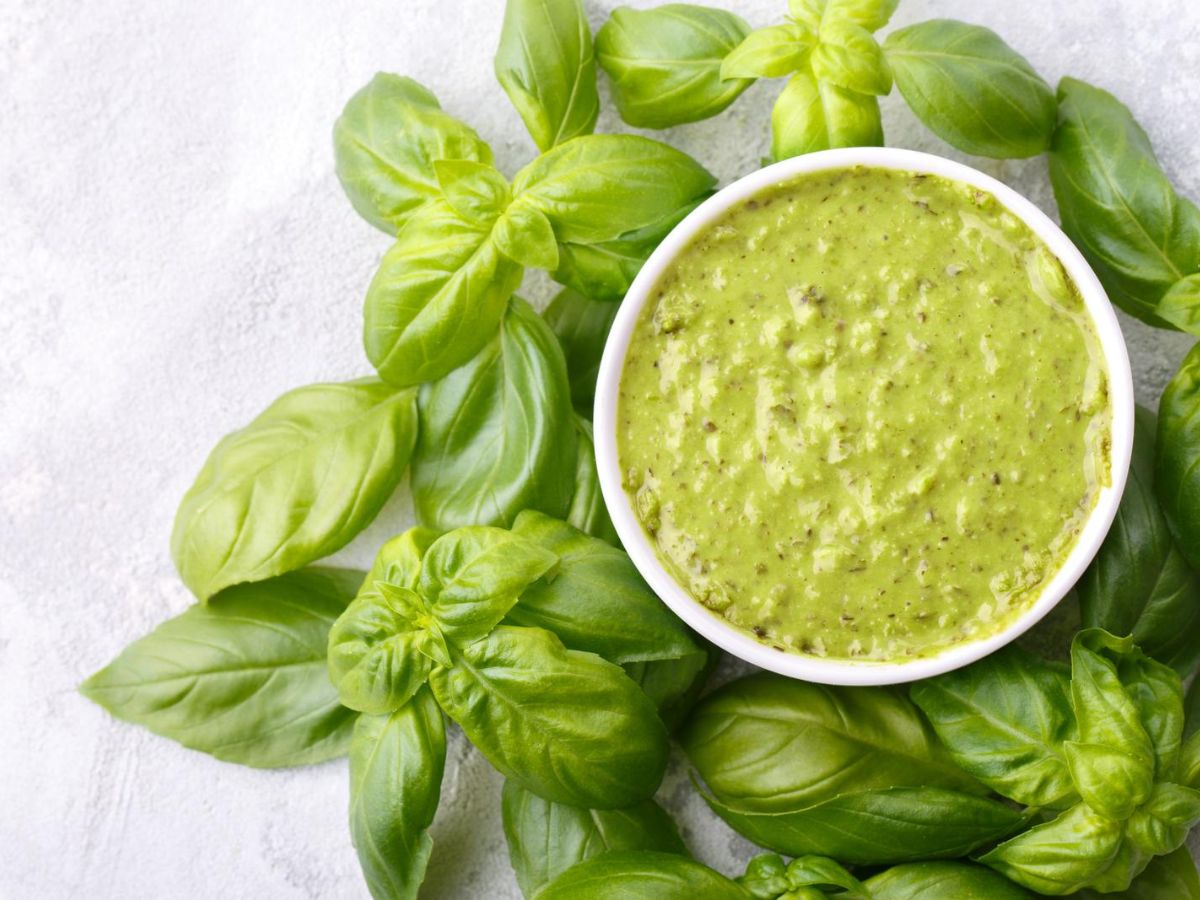
Dive into the world of vegan pesto, where fresh basil twirls with nutty companions and dairy-free magic wands create a culinary delight. Whether you're a seasoned chef or a curious newbie, here’s how to whip up a plant-based pesto that's ready for the spotlight.
The information provided on this site is based on my personal experience living with alpha-gal syndrome. I consistently cite and link to expert sources, but nothing published on this site should be perceived as medical advice.
Alpha-gal sensitivities vary by person. You should understand your dietary restrictions, making any adjustments needed, and directing any questions to your physician.
Pesto combines fresh basil’s sweet and peppery taste with the rich and nutty flavor of pine nuts. Whether you’re saucing pasta, adorning meats, spreading it on sandwiches, or even jazzing up a salad dressing, pesto is the life of the culinary party. While traditionally made with parmesan cheese, a plant-based, dairy-free pesto is possible and can be just as delightful as the original recipe if made correctly.
This guide will be your dance partner in the kitchen, teaching you the steps to create the perfect vegan pesto.
To help offset the costs of running SageAlphaGal.com, you’ll find affiliate links lightly sprinkled throughout the site. If you choose to make a purchase via one of these links, there’s no additional cost to you, but I’ll earn a teeny tiny commission. You can read all of the legal blah blah blah (as my little niece says) on the full disclosure page.
In This Article

Origins of Pesto
Let’s take a culinary journey back to Genoa, Italy, the bustling capital city of the northwest region of Liguria. In the late 16th century, pesto made its grand entrance, twirling onto the scene like a well-coated spaghetti noodle. Genoese chefs first whipped up this green delight, and it’s been brightening up dishes ever since!
Did you know the word “pesto” originates from the Italian word “pestare,” meaning to pound or crush? That’s right, traditional pesto was all about grinding those ingredients together with a mortar and pestle. Talk about a workout!
Originally, the recipe for a classic pesto consisted of fresh basil leaves, minced garlic cloves, pine nuts, Parmigiano-Reggiano cheese, pecorino cheese, and olive oil.
Want Alpha-Gal Safe Recipes and More?
Sign up for the weekly newsletter!
Thank You for Subscribing!
Essential Components of Any Pesto
Whether you’re staying traditional with cheese or going rogue with a vegan twist, here’s your dance card of crucial ingredients.
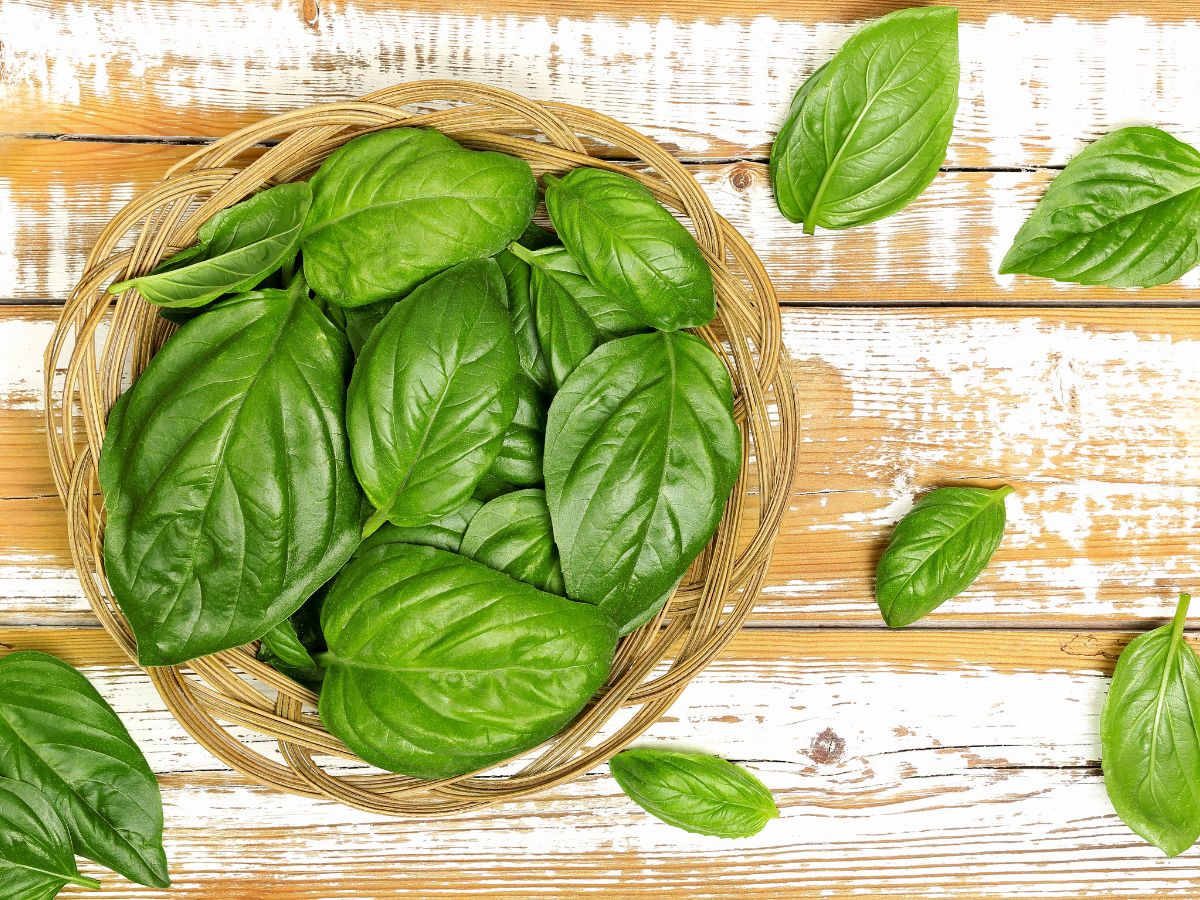
Greens
Greens are how pesto obtains its classic vibrant green color. The traditional pesto recipe leans entirely on basil, an aromatic, bright, and peppery herb. However, one of the most typical ways to alter pesto and create fun new varieties is by changing the herbs or using leafy greens in their place.
While basil is the traditional star, don’t be afraid to mix it up with parsley, arugula, spinach, or even kale. Seasonal variations such as ramp pesto or garlic scape pesto are like the limited-edition flavors of the pesto world.
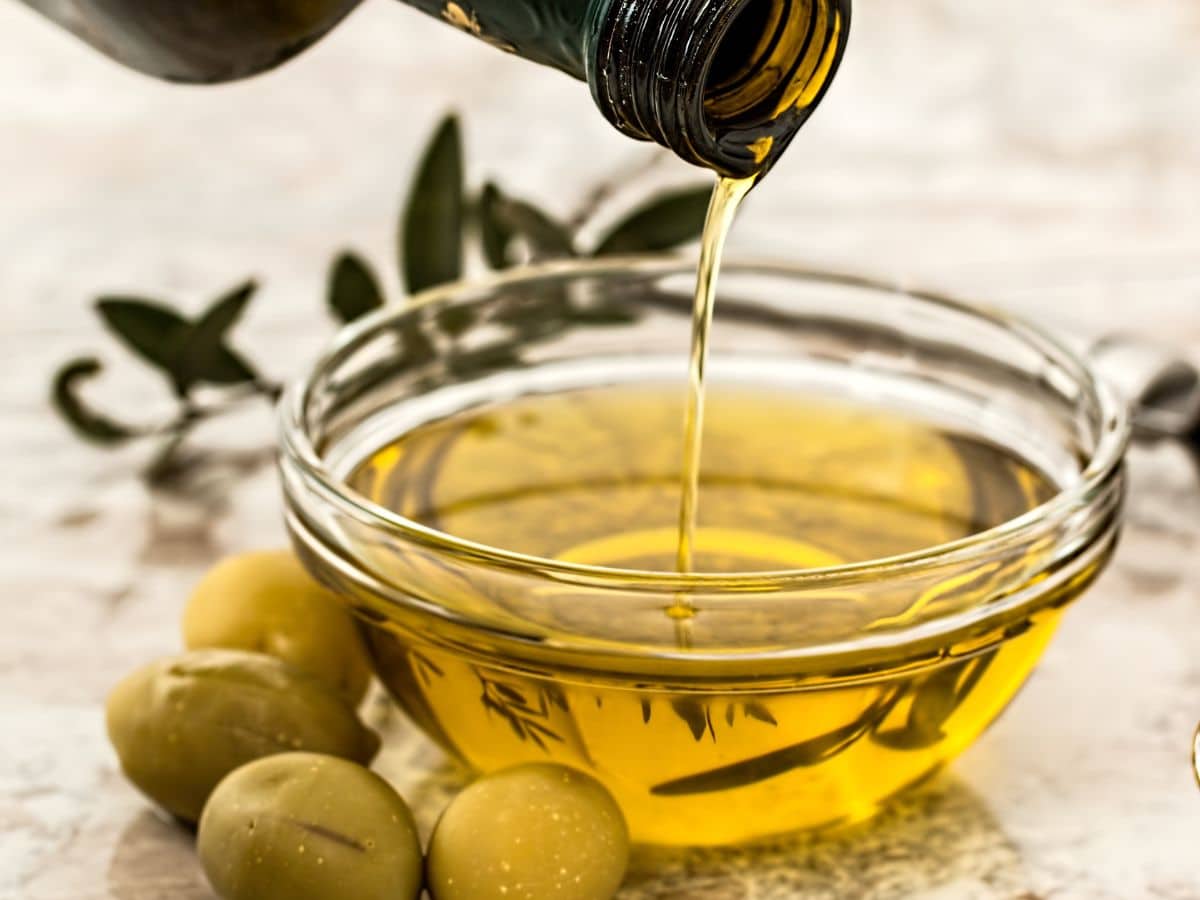
Extra Virgin Olive Oil
Extra virgin olive oil’s herbaceous taste is a perfect match for fresh pesto. The oil brings out the best in the other ingredients and moonwalks those fresh flavors throughout the dish, giving pesto its rich and velvety texture.
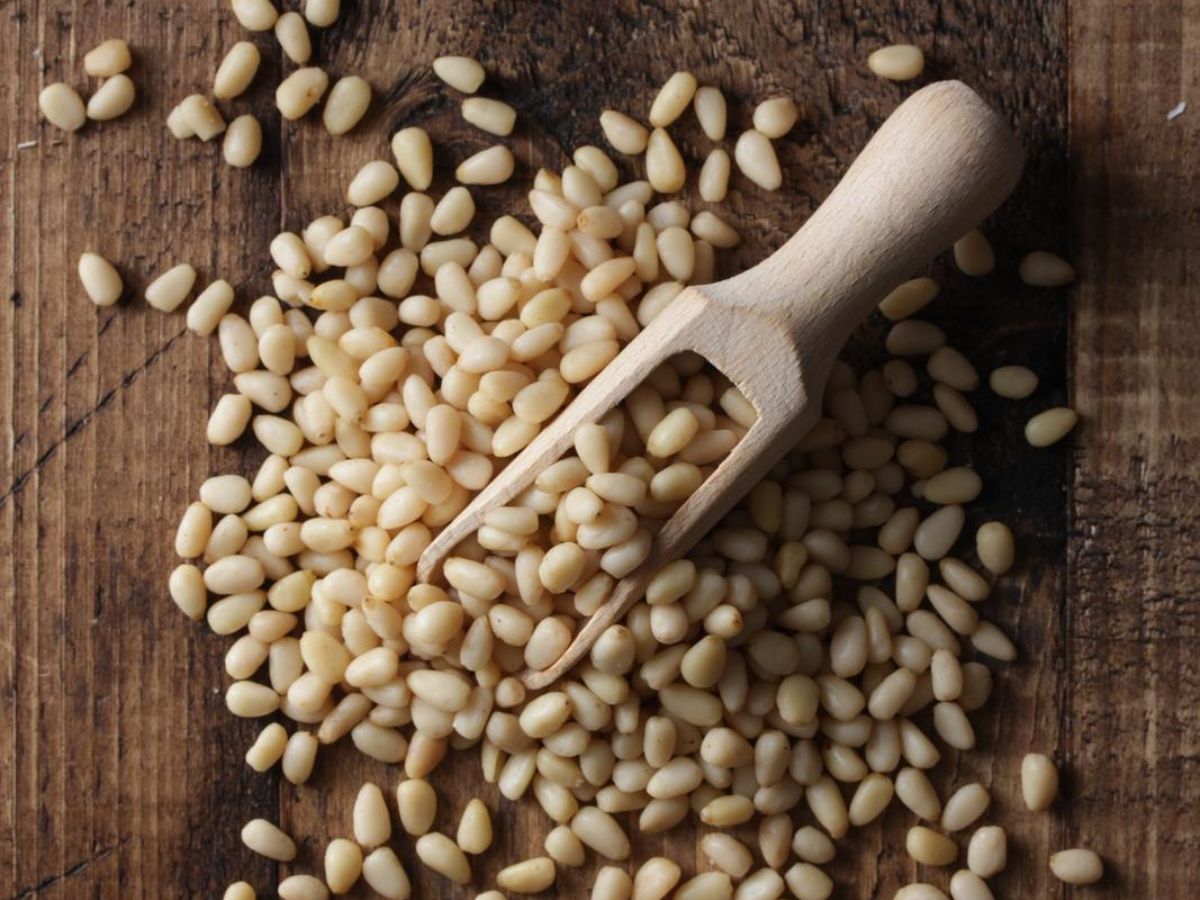
Nuts or Seeds
Once a loyal partner to pine nuts, pesto has branched out and embraced all kinds of nutty companions. From almonds to walnuts, this versatile sauce is now dancing with different types of nuts, creating a flavorful fiesta in every bite. Some even omit nuts entirely and opt for seeds instead. Nuts or seeds offer both a textural element to the pesto, making it thicker and creamier when blended, as well as contributing to the earthy, rich taste.
Toasting the nuts before making the pesto offers an even deeper flavor and is like adding a little black tie to the affair. Common nut substitutions include pecans, walnuts, pistachios, almonds, and cashews. And for the nut-free crowd? Sunflower seeds or pepitas are ready to party.
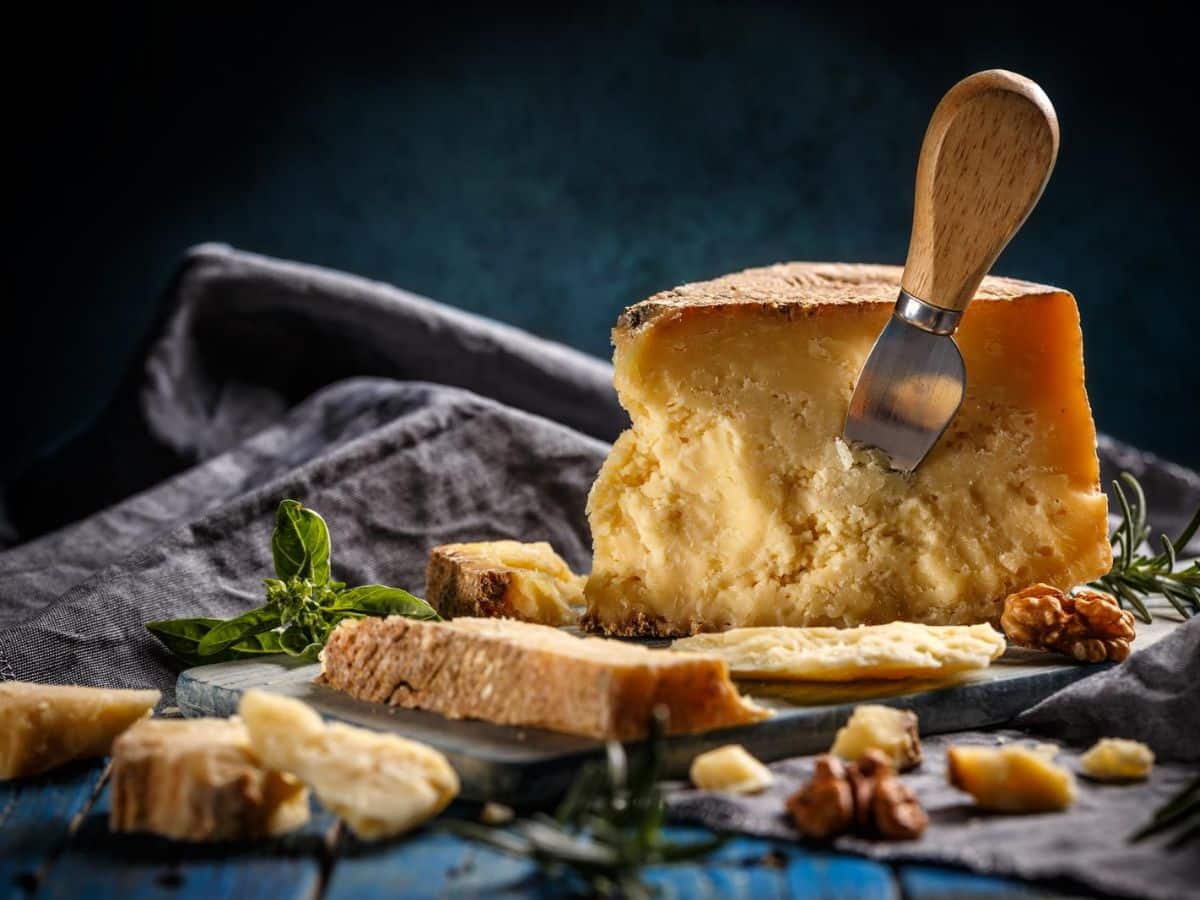
The Cheese Factor
Cheese in pesto contributes a salty, umami undertone to the sauce while also helping to bind the ingredients together. Along with the oil, it’s another contributing component to the creamy mouthfeel in the finished product.
With the rise of plant-based diets, vegan versions of pesto have become a popular alternative to the traditional recipe using a cheese substitution.
Related Article: Is Cheese Vegetarian? Slicing Into the Truth
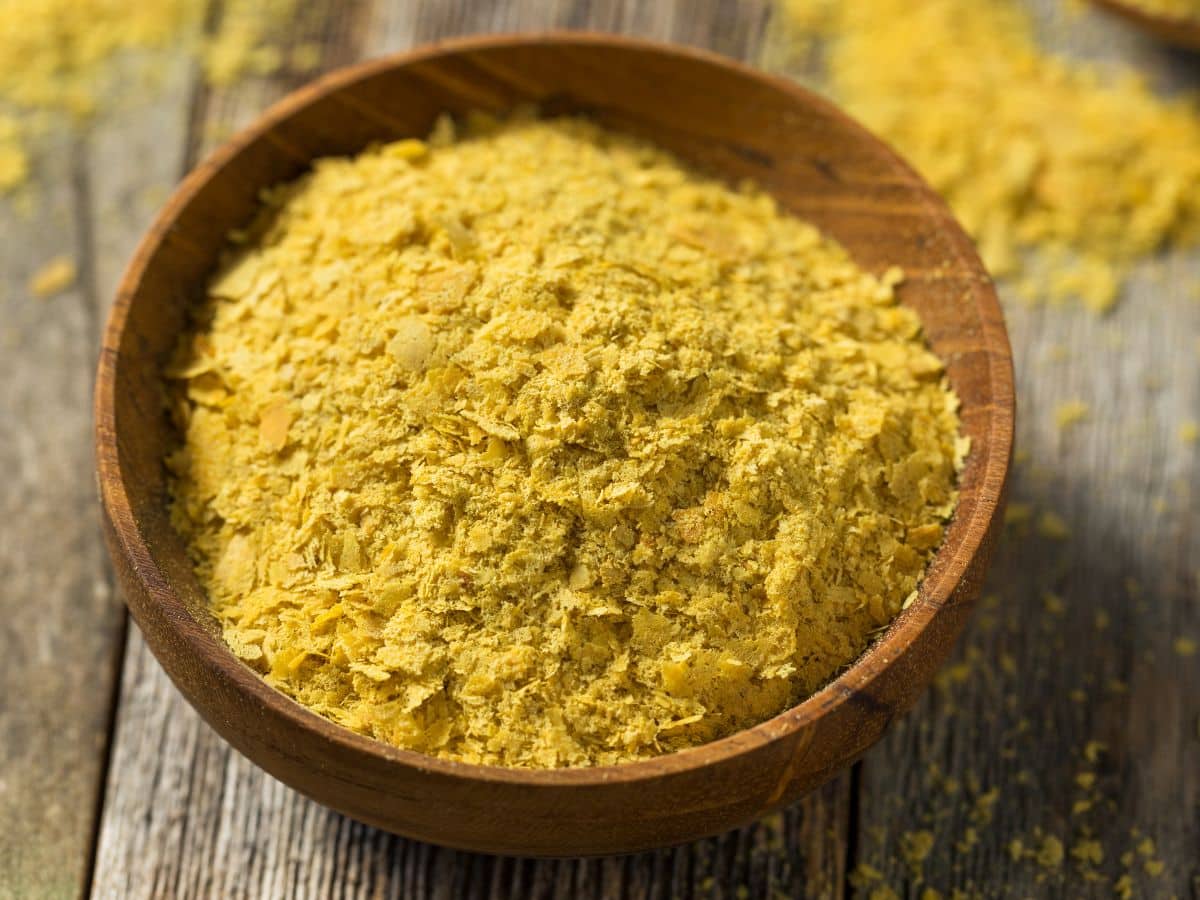
Nutritional Yeast
Any vegan worth their salt (or yeast) knows this golden flake is the go-to swap for cheese-filled recipes. It’s like a dairy-free magic wand, turning ordinary dishes into vegan delights. Nutritional yeast, commonly called nooch, is a deactivated version of the yeast used to make beer or bread. The flakes are typically sold in bulk and have become so mainstream in recent years that they are available at regular grocery stores where they’re just waiting to jazz up your next vegan masterpiece with a subtle cheesy flavor.
With its savory flavor, nutritional yeast can be substituted for pecorino or parmesan in pesto at a one-to-one ratio.
“I love to make vegan pesto with nutritional yeast as the cheese substitute. Not only does it work well, it tastes better than cheese in many instances. I also sometimes use sunflower or hemp seeds instead of standard pine nuts as they can impart a cheesier flavor.”
— Kristen Wood, MOON and spoon and yum
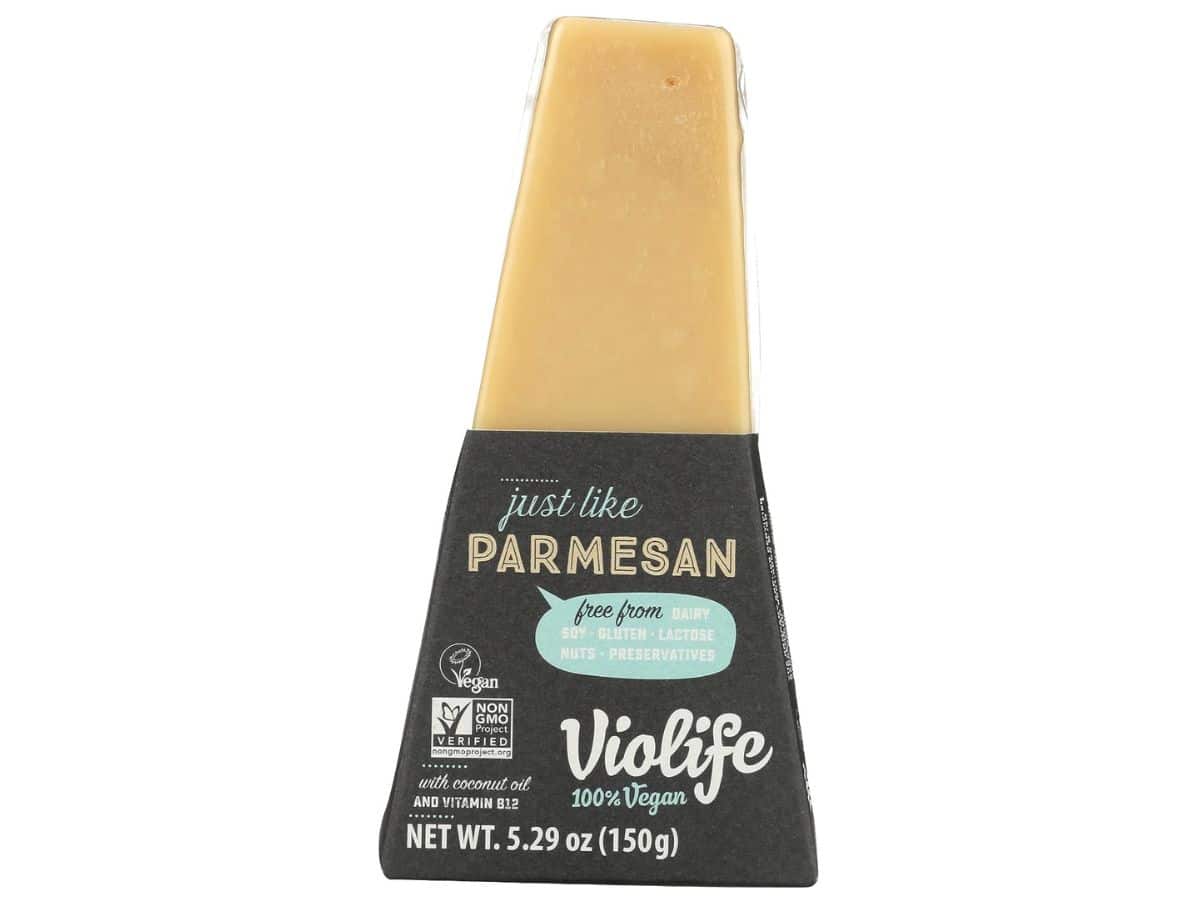
Vegan Parmesan
From store-bought varieties to homemade blends of cashews and nutritional yeast, vegan parmesan is the rockstar of dairy-free cheese. Vegan cheese options are abundant these days, and it shouldn’t be hard to locate a quality vegan parmesan no matter where you shop. Store-bought varieties are usually made from potato or rice starches to mimic the dry texture of milk-based parmesan.
You can also easily make homemade vegan parmesan. Recipes for this typically combine nuts like cashews with nutritional yeast, resulting in a finely grated vegan cheese perfect for using in pesto or sprinkling on top of cooked pasta.
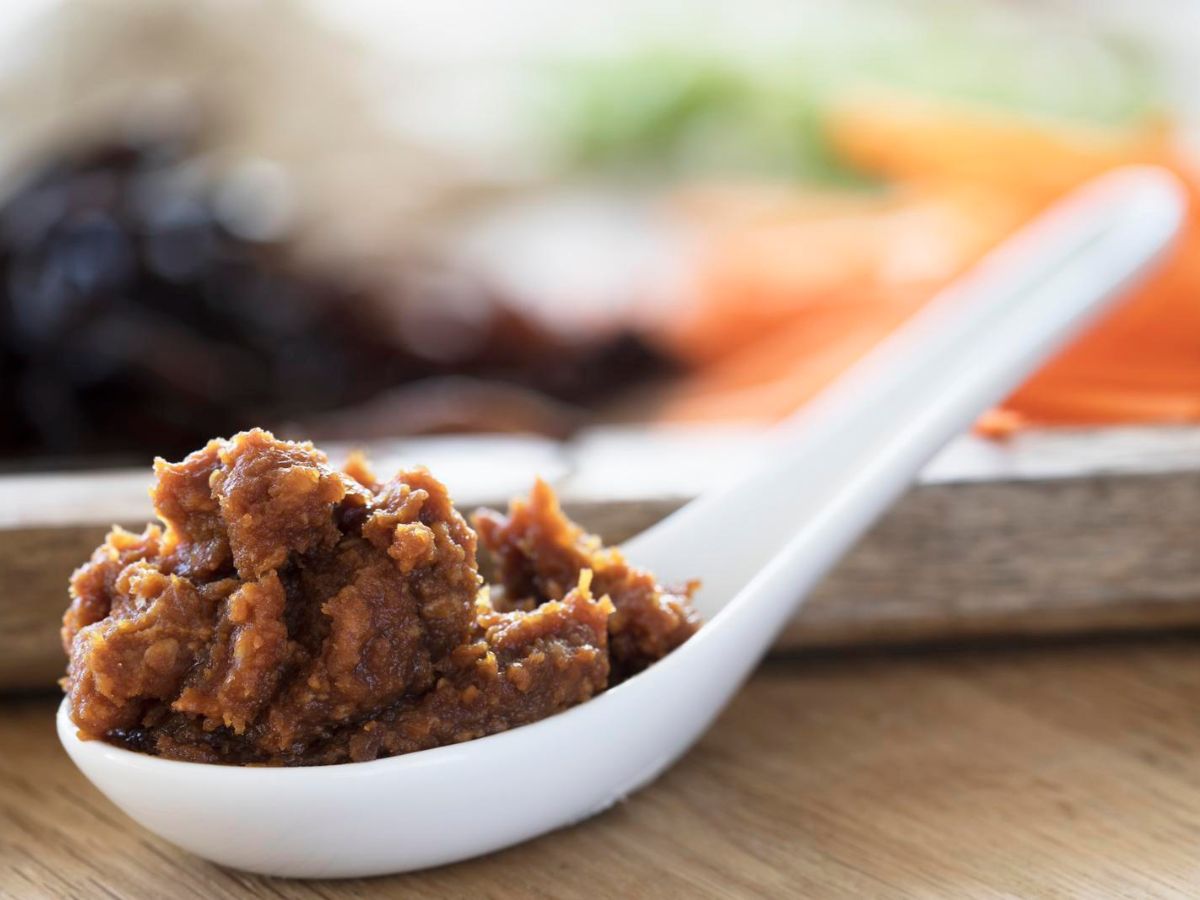
Miso Paste
Fermented soybeans in pesto? It sounds ridiculous, but it’s a flavor sensation! Miso paste offers many of the same savory, umami and salty characteristics as parmesan. A little goes a long way with miso paste, though, so using 1 to 2 tablespoons is plenty.
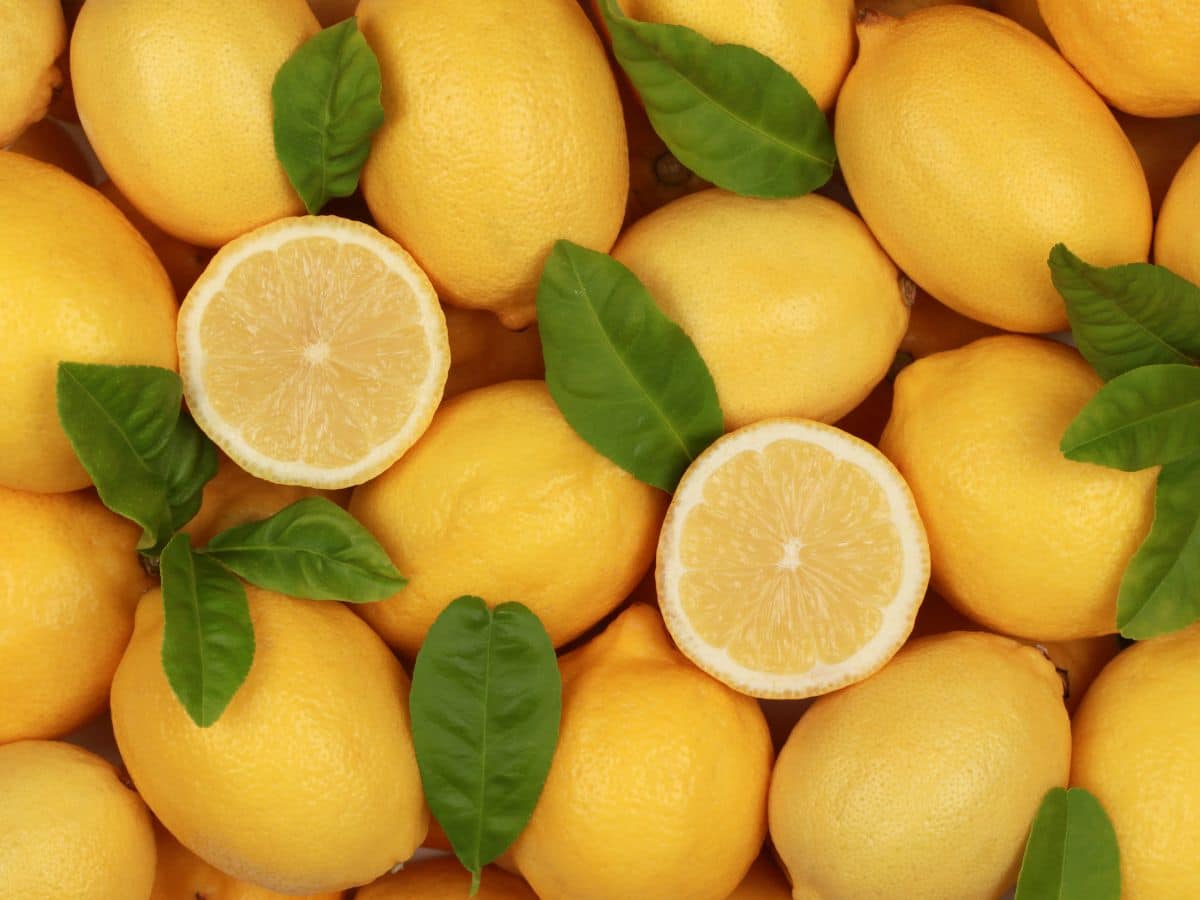
Lemon
Fresh lemon zest and juice in pesto is like a splash of sunshine. It adds tangy brightness, making cheese or cheese-like products optional. Fresh lemon juice brings such vibrancy to pesto that it’s a great addition to both vegan and traditional recipes. The acidity also helps keep the pesto radiant, bright green.
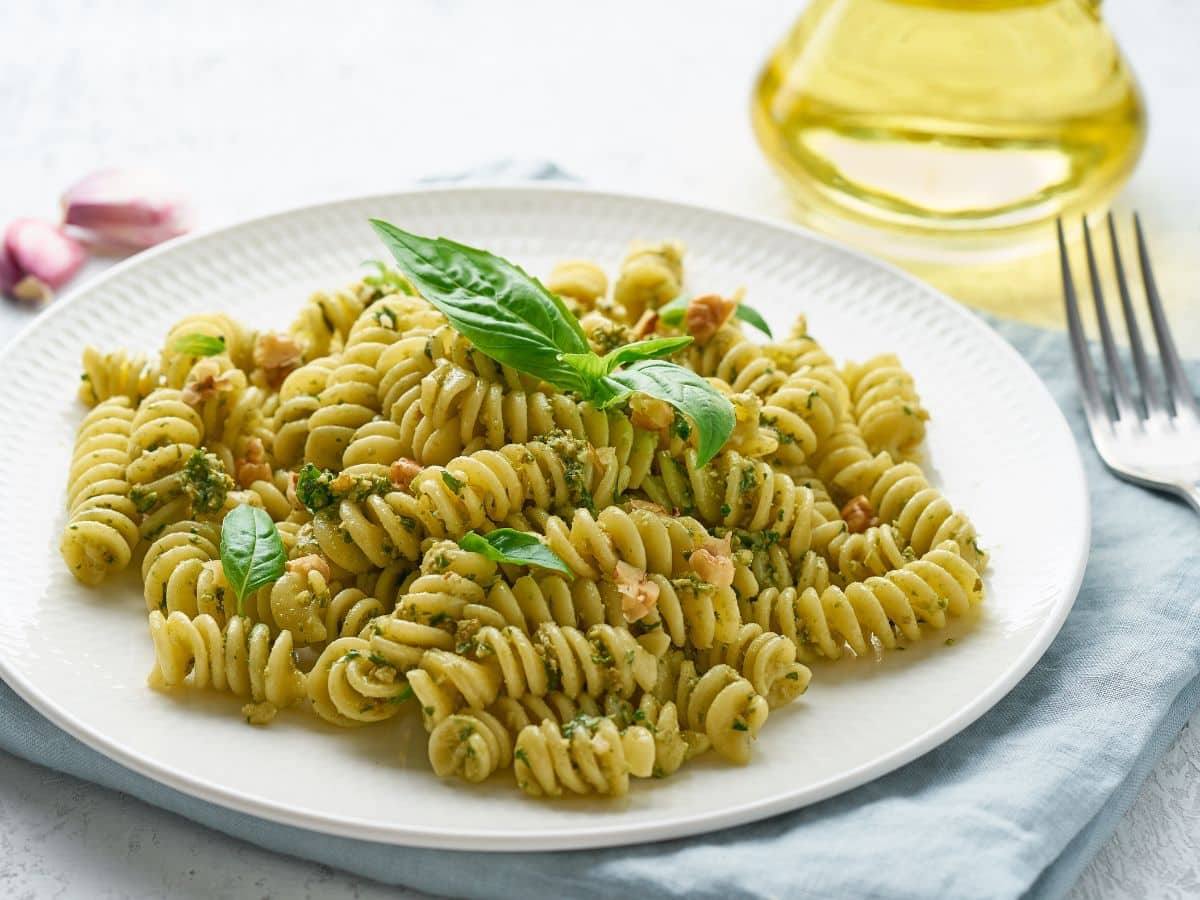
Ways to Use Vegan Pesto
Ready to let your homemade pesto take center stage? Here’s how to let this flavorful sauce shine:
- Toss pesto with your favorite pasta
- Whip up roasted pesto potatoes as an easy side dish
- Use pesto instead of traditional tomato-based pizza sauce
- Spread pesto on sandwich bread
- Top roasted vegetables, chicken, or seafood with a dollop of pesto
- Add more olive oil, and convert pesto to salad dressing
- Dip breadsticks, focaccia, or sourdough in pesto
- Swirl pesto into soups
Storing Vegan Pesto
Got leftovers? No problem! Slide that vegan basil pesto into an airtight container and let it chill in the fridge, where it’ll keep the party going for up to a week. Want to keep the celebration alive even longer? Spoon the pesto into an ice cube tray. Once the pesto has frozen into cubes, move them to a freezer bag and keep them for up to six months. When you’re ready to rock and roll, thaw as many pesto cubes as you need, bearing in mind that each cube is about two tablespoons. Now that’s what I call cool cuisine!
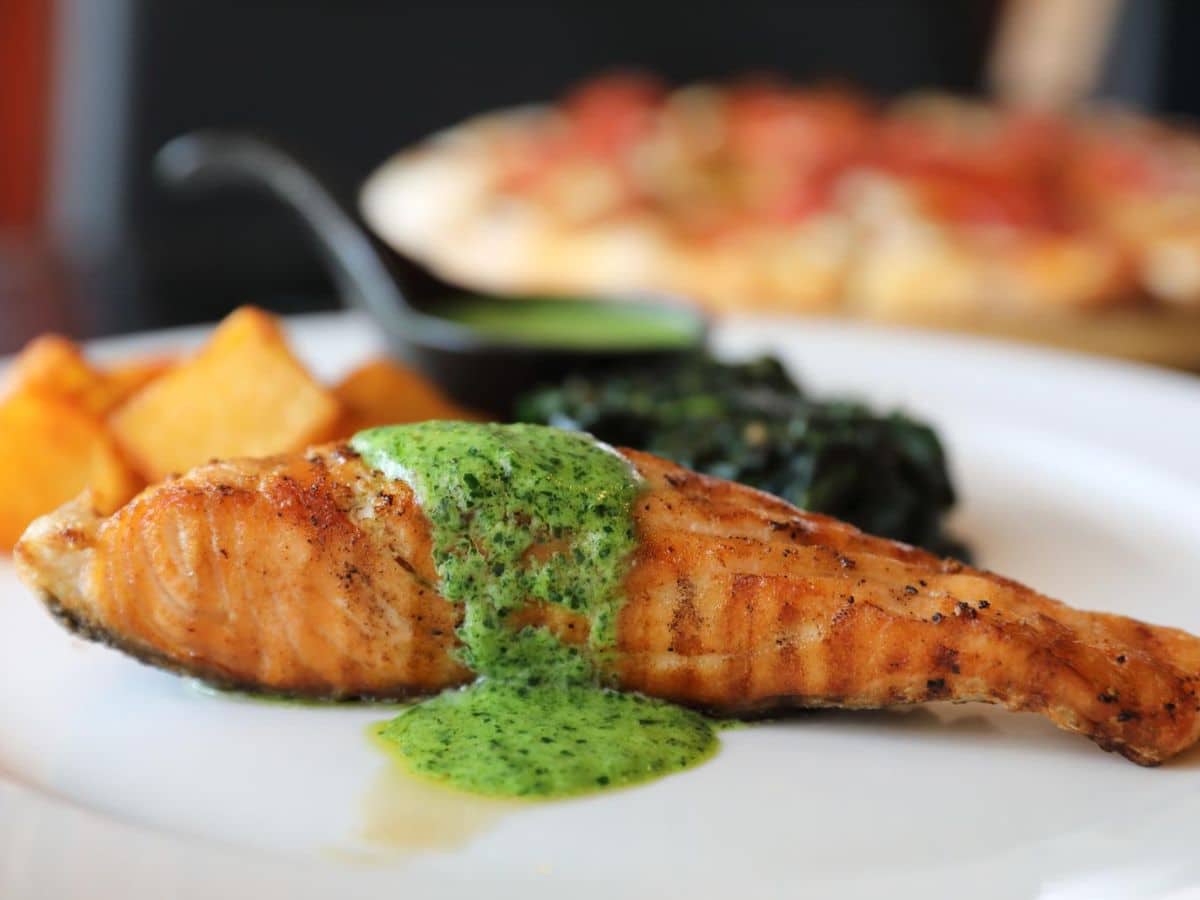
Redefine Tradition
Pesto is more than a delicious sauce — it’s a culinary icon. Its flexibility makes it an indispensable recipe for cooks of all kinds. So swap out the greens, choose different nuts, or make it plant-based. Pesto is ready to tango with your tastebuds!
Portions of this article originally appeared on Food Drink Life.
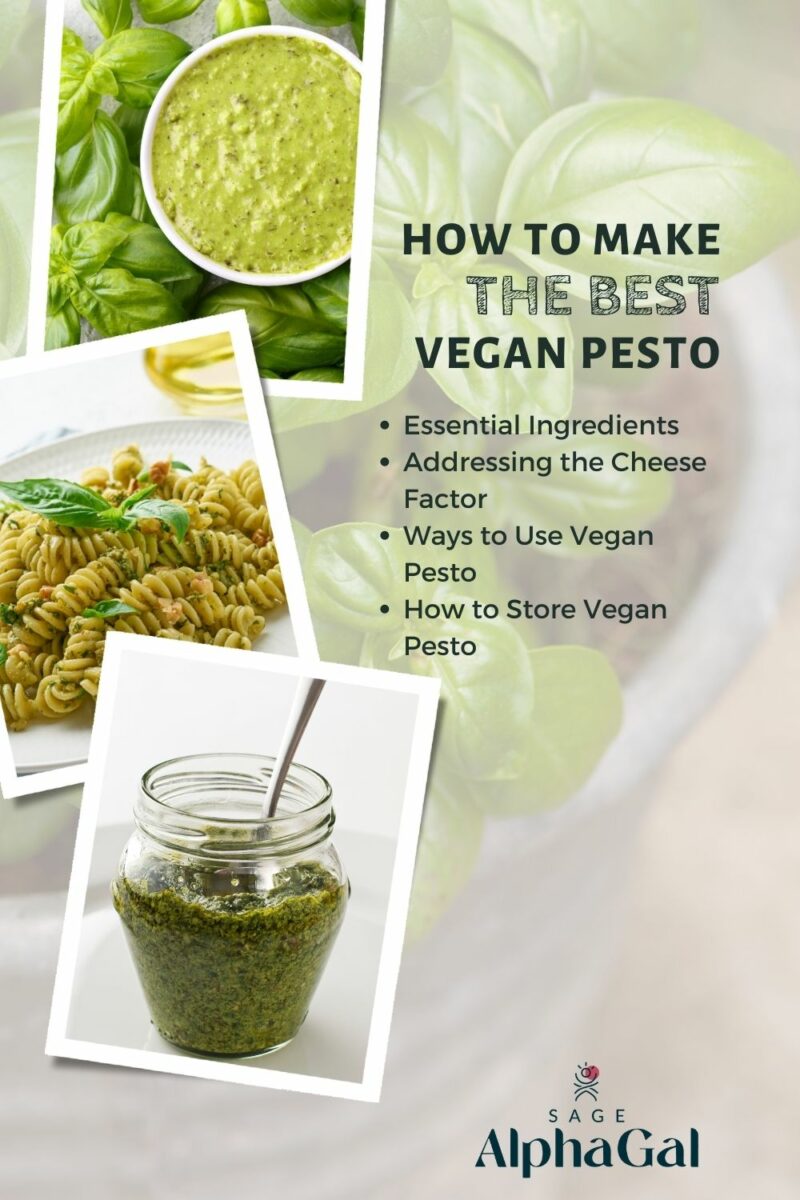

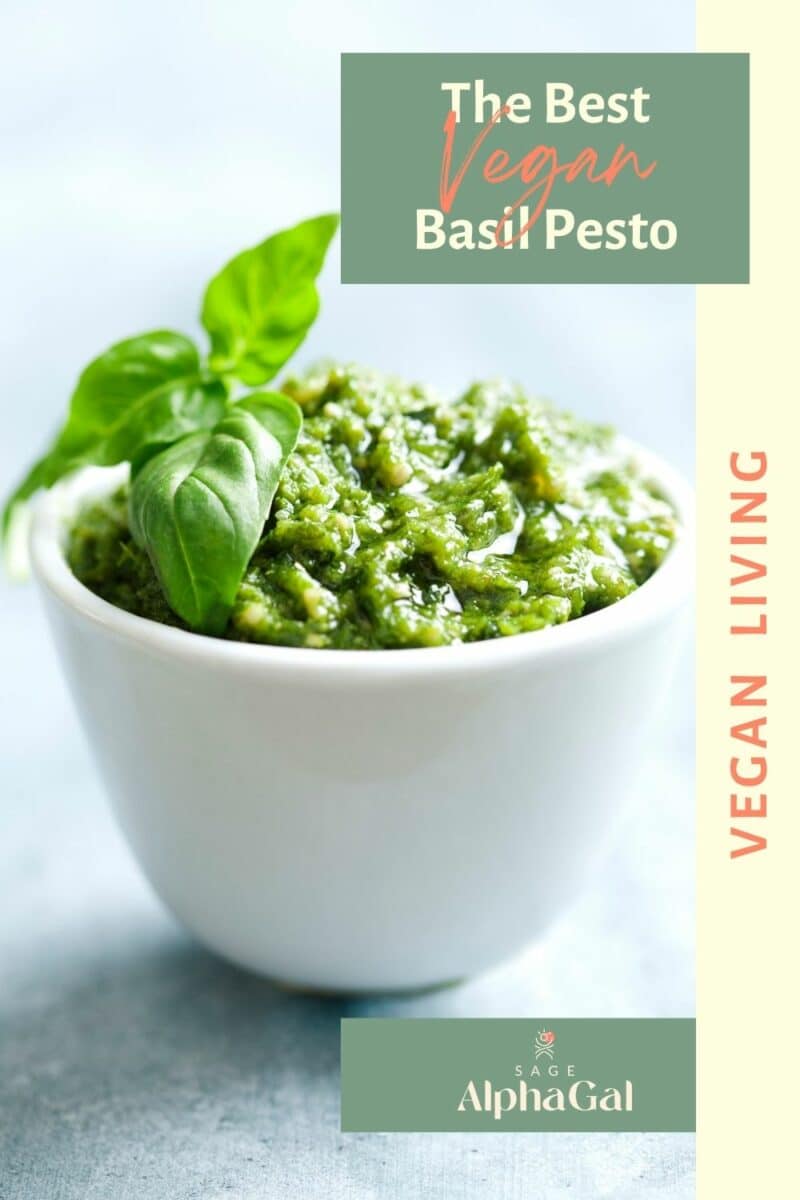
Thank you for sharing!

